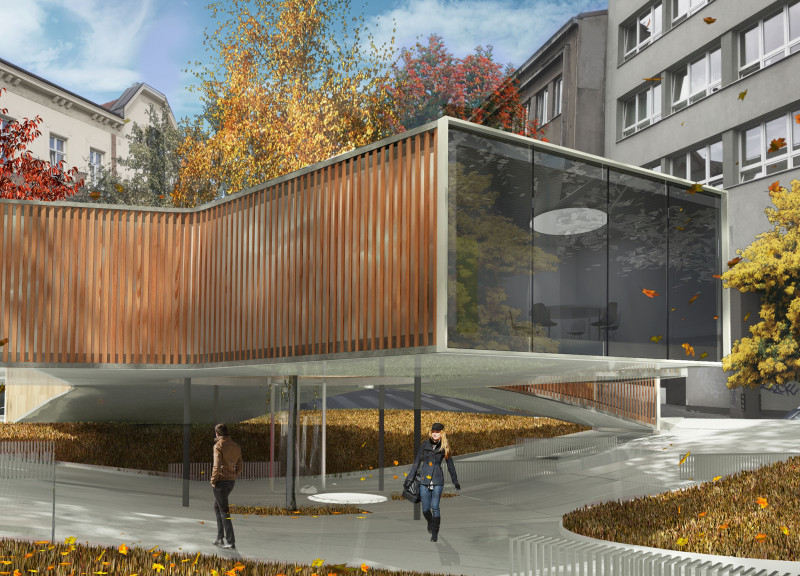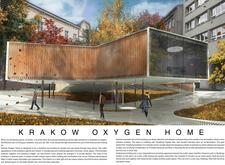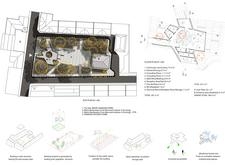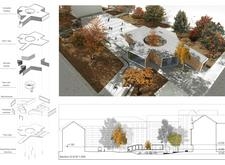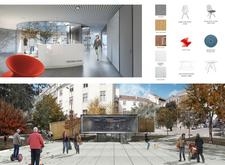5 key facts about this project
The primary function of the Krakow Oxygen Home is to provide essential health services while also serving as a hub for community engagement and education on air quality issues. The design reflects a thoughtful approach to creating a healing environment that fosters both physical and mental well-being. This dual purpose is manifest in the project’s layout and integration with its surrounding landscape, facilitating a connection between health and nature.
At the heart of the project is a central circular space that promotes interaction among visitors, encouraging social dynamics and community connection. Included are essential areas such as consulting and examination rooms, a community room that also serves as a library, and an inviting kitchen and dining area designed for comfort and nourishment. The reception area welcomes individuals in a warm manner, guiding them seamlessly to various services offered within the facility.
Unique to this architectural design is the concept of a ‘breathing’ façade, which visually embodies the quality of air. This innovative design approach not only supports functionality by enhancing air circulation but also educates visitors about the importance of clean air. The building itself is elevated above the ground, creating open outdoor spaces that encourage interaction with the park and nature, emphasizing a harmonious relationship with the environment.
Materiality plays a crucial role in the project’s overall aesthetic and function. The use of concrete ensures the building's stability and longevity, while warm wood finishes, specifically maple and white oak, provide an inviting atmosphere. Extensive glass elements facilitate transparency, allowing natural light to permeate the interior, thus enhancing the connection to the outdoors. Aluminum composite panels serve to give the building a contemporary finish, while the inclusion of white marble brings an elegance to the interior spaces.
In terms of layout, the Krakow Oxygen Home is designed with accessibility in mind, ensuring that all visitors, regardless of their physical capabilities, can navigate the space easily. The organic flow of movement throughout the building minimizes barriers and creates a cohesive experience, reinforcing the project’s commitment to inclusivity in health care.
The project also respects and responds to the existing park landscape, ensuring that the spaces around the building remain open and accessible to the public. This thoughtful integration not only preserves the beauty of the park but also enhances community engagement, encouraging individuals to appreciate both the facility and the natural environment surrounding it.
The Krakow Oxygen Home stands out as a modern response to the pressing needs of urban populations concerning health and environmental awareness. Its design combines functional healthcare with beautiful architecture, encouraging a dialogue about air quality and well-being. By making connections between people, health, and nature, this project exemplifies contemporary architectural practices that prioritize both community needs and environmental stewardship.
To gain deeper insights into the innovative architectural plans, sections, designs, and ideas manifested in this project, interested readers are encouraged to explore the project presentation in more detail.


